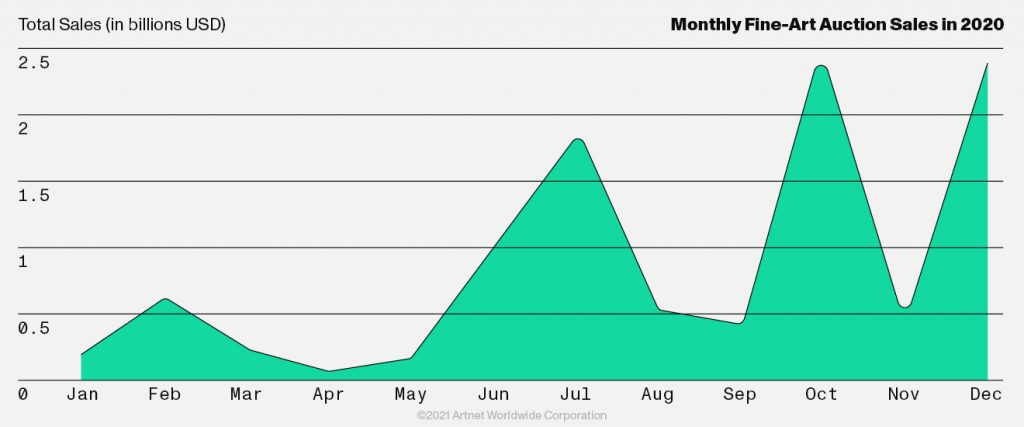The Intelligence Report
Introducing: The Spring 2021 Artnet Intelligence Report
From a profile of market darling Robert Nava to a look at the economics of the experiential art economy, here are the highlights.

From a profile of market darling Robert Nava to a look at the economics of the experiential art economy, here are the highlights.

Artnet News

Back in December, when we first started thinking about what to focus on for this issue of the Intelligence Report, a cover story about a new business dedicated to producing experiential, immersive art for mass consumption seemed like science fiction (or, at the very least, historical fiction).
But by the time the issue kicked into gear and the snow on the streets of New York began to melt in late February, the end of the lockdown seemed like an eventuality, and life afterward something we could credibly fantasize about, if not yet practically prepare for.
Superblue, the company formed last year by Pace CEO Marc Glimcher with backing from Laurene Powell Jobs, has been preparing for this future since social-distancing measures first went into effect a year ago. Next month, the company plans to open its 50,000-square-foot Miami funhouse complex to a much smaller audience than it originally anticipated. But Superblue’s borderline-messianic belief in both the artistic and financial potential of ticketed art experiences has attracted new investors even during lockdown, fueling a planned expansion into two more cities.
In these pages, you’ll find plenty of signs of an industry preparing for life after what has felt like a March 2020 that went on forever. Eileen Kinsella examines which of the digital innovations developed to help businesses remain afloat during the pandemic are here to stay—and which areas remain ripe for innovation in a hybrid digital-IRL future.
Our data-led breakdown of the market also reveals which segments have recovered most quickly (see: China) and which are lagging behind (see: art worth over $10 million).
Meanwhile, Nate Freeman delves into the artistic enigma that is Robert Nava, the art market’s new so-bad-it’s-good obsession and critics’ latest object of disdain. Admirers of Nava, whose prices have spiked from $25,000 to $150,000 in just two years, maintain that his work has to be experienced in person to be properly appreciated. (We’ll see.)
Finally, we’ll take you inside the gripping, twist-filled Ruffini affair, a forgery scandal that has rocked the Old Master sector and showed just how slippery multimillion-dollar questions of attribution can be. As it turns out, the man accused of masterminding the scam may be its biggest victim.
There’s a lot going on in the art market right now. Imagine what will happen when we can see one another again.
– Marketplace
• Why the art market wasn’t derailed by the pandemic
• What top collector Karen Levy buys (and why)
• The top 10 lots of 2020 in every major category
– Experience Art, Inc. by Tim Schneider
How moving to a post-thing economy could save the art market from obsolescence.
– Rise of the Cyborg Art Dealers by Eileen Kinsella
All it took for the art industry to finally embrace digital was a global pandemic. What does the hybrid IRL-online art market of the post-COVID era look like?
– Bad to the Bone by Nate Freeman
Why do Robert Nava’s paintings feel so good to a certain class of moneyed collectors when they look so… bad?
– Is This the Art Crime of the Century? by Simon Hewitt
A cache of purported forgeries may have scammed everyone from top dealers to the prince of Liechtenstein. Now, the alleged mastermind of the fraud is speaking out.
– Here’s What Really Happened to the Art Market During Lockdown by Julia Halperin
• Which country’s art market thrived during COVID?
• How much did online sales actually grow?
• Who are today’s most bankable artists?
